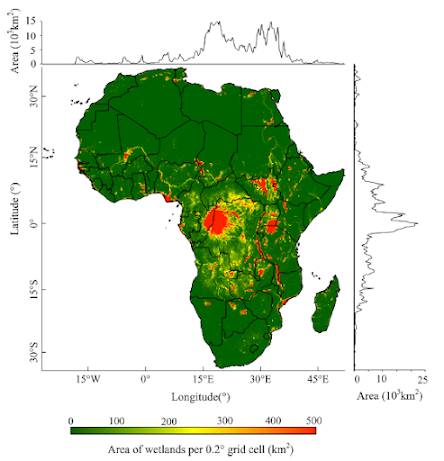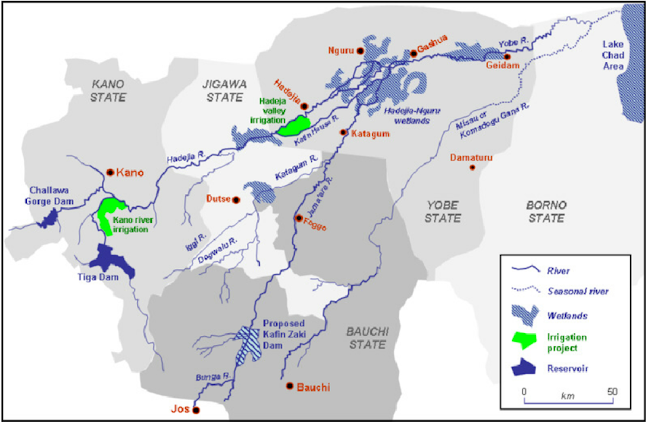This post looks at the importance of wetlands through a case study example. These environments encompass many issues and challenges within the topic of water and food which makes them perfect to explore.
What are wetlands?
Wetlands are areas of land that are often inundated with water. This can happen seasonally or periodically in some areas while other areas of wetland can be inundated permanently. Some important African wetland features can include peatlands, rivers, deltas, mangroves, and floodplains. These ecosystems have been argued to be some of the most productive in the world and also at the greatest risk from climate change. Overall, wetlands make up approximately 1,341,500 km2 of the total area in Africa with the largest areas of wetland around the equator.
Figure 1: Locations of wetlands in Africa by area.
The Hadejia-Nguru Wetlands
Figure 2: The location of the Hadejia-Nguru wetlands.
A threatened wetland
The forgotten downstream
While wetland intervention projects in the Chad Basin can be useful in releasing water during periods of drought. Water is stored in reservoirs during the rainy seasons and flood extent will not increase enough to fully inundate all agricultural land in the HNWs. Indigenous farming practices in the HNWs involve the planting of flood rice plantations. With reduced flood extent in the rainy season, many of these crops will fail and food security will lower. Another important use of this wetland is fishing, aquatic vegetation grows on inundated land as it is nutrient-rich. This provides food for fish and allows them to reproduce in flood waters. As floods subside fish remain trapped in pools where fishing activities take place. Despite these vital activities and the high productivity of the HNWs, little government investment has taken place compared to upstream areas. More attention needs to be focused on understanding these remote wetland areas as local people rely on their great productivity to survive.




Comments
Post a Comment